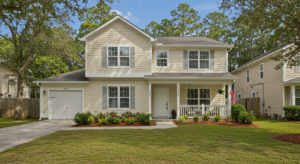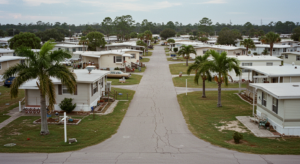Narrative
In 2016, the owners of a short-term rental property in Kissimmee, Florida, undertook strategic tax planning to enhance their investment. The property consists of a single 2-story building constructed in 2002. The owner acquired this property on December 18, 2016, for a purchase price of $176,000.
The property features multiple amenities including a swimming pool with lanai enclosure, ceramic tile flooring, laminate wood flooring, and modern kitchen with standard appliances. The exterior showcases a combination of stucco walls and CMU construction, while the interior includes well-appointed bathrooms with glass shower enclosures and vanity sinks.
The owners engaged Engineered Tax Services (ETS) to perform a comprehensive cost segregation study of the property in October 2024. This study aimed to identify and reclassify specific assets, enabling the acceleration of depreciation and optimizing tax benefits. An important finding was that the property had been incorrectly classified as a residential rental (27.5-year class life) but needed to be reclassified as a short-term rental requiring a 39-year class life. This case study outlines the cost segregation strategy employed and its significant impact on the financial outlook of the property.
Objective
The primary objective of the cost segregation study was to identify and classify the rental property's assets to optimize the owner's tax savings. By breaking down and reallocating components into shorter depreciation life categories, ETS aimed to provide both immediate and long-term financial benefits through accelerated depreciation while ensuring proper classification of the property type for tax purposes.
Methodology
ETS employed a detailed, engineering-based approach, which included:
- Physical Inspection: conducting a thorough site visit to identify and photograph the property's components
- Document Review: examining architectural plans, construction documents and accounting records
- Cost Analysis: applying engineering principles to allocate costs to specific asset classifications
- Depreciation Calculation: calculating depreciation using IRS-accepted methods such as the Modified Accelerated Cost Recovery System (MACRS)
Learn More About Cost Segregation
Explore the benefits of cost segregation and how it can enhance your property's profitability. Dive deeper into our strategies.
Discover MoreAsset Allocation
5-Year Class Life
Total Depreciation Allocation: $34,261.43
Percentage of Total Depreciable Basis: 19.47%
5-year class life assets identified in this study include:
- Kitchen appliances (oven/range, dishwasher, refrigerator, garbage disposal, microwave)
- Laundry equipment (washer, dryer, vent kits)
- Furniture and fixtures (upper cabinets, countertops, pantry cabinets)
- Electric components (dedicated equipment outlets, television connections, equipment panels)
- Window treatments (vertical blinds, horizontal blinds)
- Pool lanai enclosure
- Specialty lighting fixtures (accent billiards pendant light)
15-Year Class Life
Total Depreciation Allocation: $19,349.24
Percentage of Total Depreciable Basis: 10.99%
15-year class life assets identified in this study include:
- Pool equipment for 800 SF pool
- Swimming pool (concrete bottom and sides with tile finish)
- Concrete pool deck
- Concrete equipment pad
- Landscaping (underground sprinklers, sodding, planting beds)
- Concrete paving
39-Year Class Life
Total Depreciation Allocation: $122,389.33
Percentage of Total Depreciable Basis: 69.54%
39-year class life assets identified in this study include:
- Structural components (drywall partitions, perimeter drywall, wood stud framing)
- Roof components (wood roof construction, asphalt shingle roof)
- Building foundation (footings, slab on grade)
- Bathroom fixtures (bath tub, glass shower, vanity sink, water closet)
- HVAC central split system
- Plumbing systems (water heater, hose bibb)
- CMU walls
- Flooring (ceramic tile, wood flooring)
- Interior and exterior doors
- Ceiling construction
- General electrical components
Class Life Details:
Summary
The cost segregation study for this short-term rental property in Kissimmee, Florida, demonstrates the substantial financial advantages of strategic tax planning. By reclassifying property components into shorter depreciation categories, the study enabled accelerated depreciation, resulting in maximized tax savings and improved cashflow.
The study identified that $34,261.43 (19.47%) of the total basis qualified for 5-year depreciation and $19,349.24 (10.99%) qualified for 15-year depreciation, while $122,389.33 (69.54%) remained in the 39-year category. The total increase of depreciation was $34,701.31 through 2024 compared to the original depreciation schedule, providing significant immediate tax benefits to the property owner.
Additionally, the study corrected a critical classification error, ensuring the property was properly treated as a short-term rental with the appropriate 39-year class life rather than the residential 27.5-year class life, helping the owner maintain compliance with IRS regulations.
Unlock Your Tax Savings
Discover how cost segregation can maximize your tax benefits and improve cash flow. Get started today with a free consultation.
Get Your Free Consultation


